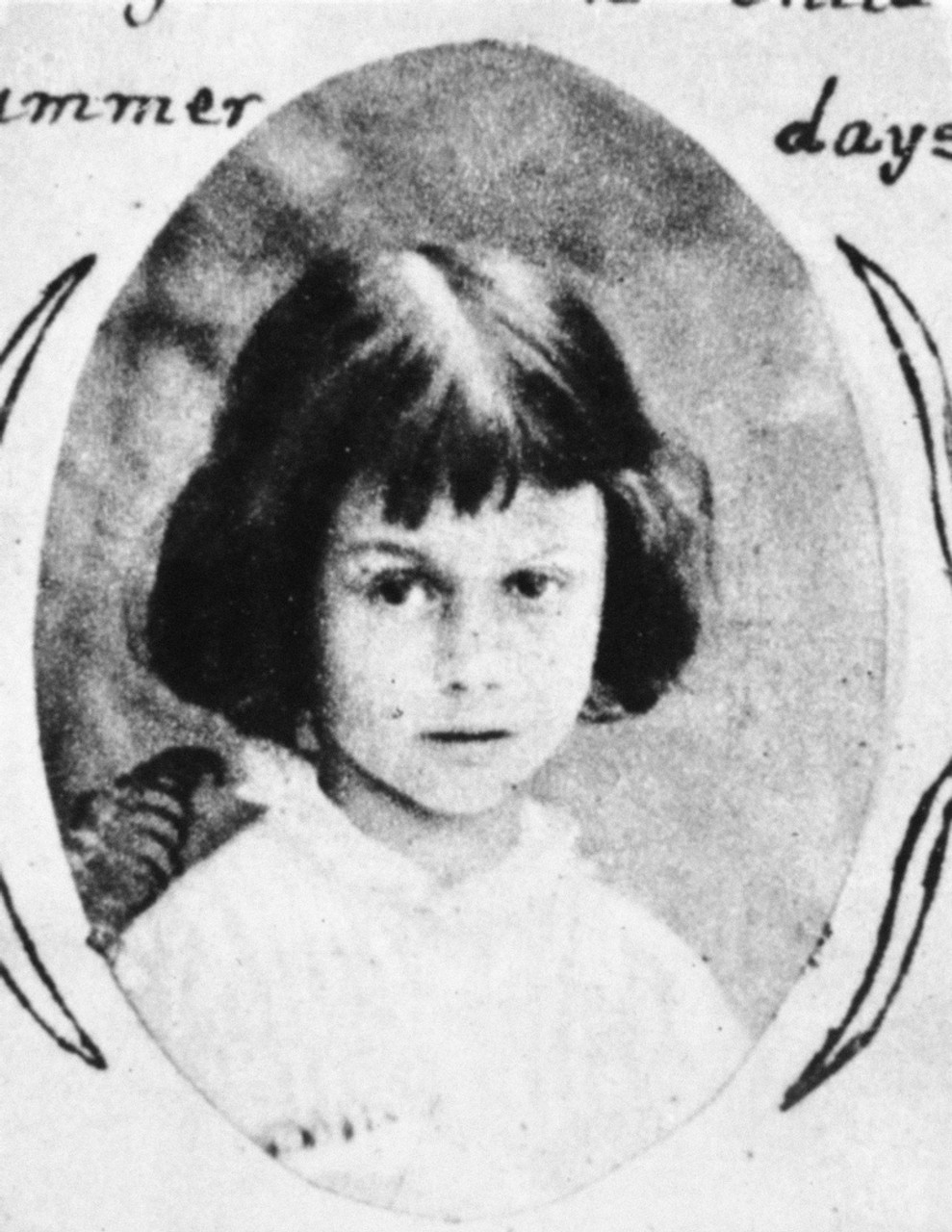Wonderland (1865)
One of the strangest creatures that Alice encountered in Wonderland was the Caterpillar who inquired who she was. Her response: “I-I hardly know, sir, at present-at least I know who I was when I got up this morning, but I think I must have changed several times since then.” Alice’s nonfictional counterpart was literary muse Alice Liddell.
A classic had its genesis when Alice’s father, Henry George Liddell, the dean of Christ’s Church, Oxford, invited Charles Dodgson to his home. The lonely bachelor, who only lost his stutter around children, became an adored surrogate uncle to Henry’s three daughters, Lorina, Edith, and Alice. An avid photographer, Charles captured the image of the eight-year-old Alice in numerous portraits; his most well-known work showcased her as the scantily clad girl from Alfred, Lord Tennyson’s poem “The Beggar Maid” that contained the quotation, “This beggar maid shall be my queen!” 
On July 4, 1862, Charles, along with the Reverend Robinson Duckworth, took the Liddell sisters for a rowboat ride along the Thames River. To entertain the youngsters, Charles made up a tale of the adventures and misadventures of a girl named Alice. Thrilled with her inclusion, Alice begged Charles to write it down as a proper book. For Christmas, he presented the ten-year-old girl with his handwritten manuscript, along with illustrations, entitled Alice’s Adventures Under Ground. All the members of the boating party made an appearance: Alice, the protagonist, Dodgson, the dodo, the Reverend Duckworth, the duck, Lorina, the lorry, Edith, the eaglet.
Three years later, under the pen name Lewis Carroll, Charles published Alice’s Adventures in Wonderland. Queen Victoria was so taken with the book she asked him to include her name in any future’s book’s dedication. A century later, The Beatles placed Charles’ image on the cover of their Sgt. Pepper album between Marlene Dietrich and T. E. Lawrence. Captain Robert Falcon Scott took the novel along on his Antarctic expedition.
The demise of wonderland arrived when Mrs. Liddell, an enraged Red Queen, gave her variation of, “Off with his head!” Something upset her to such an extent that she forbid Charles to have any contact with her family. She consigned all his letters to Alice to her fireplace. The end of their relationship was enough to wipe the grin off the Cheshire Cat. What the mama saw has never been made public—the Liddells remained mum. After Charles’ death, his family destroyed the pages of his diary concerning his banishment. The enigma surrounding Charles: was he a Nabokov who did more with Alice than talk about cabbages and kings? Was he merely an odd man who only felt comfortable in the world of childhood innocence? The truth lay in Charles’ own looking glass.
As a young woman, Alice had an affair with Leopold, the Prince of Wales, and she married Reginald Hargreaves in Westminster Abbey. However, her life led her to travel far from wonderland. Two of her sons died in World War I; the third, Caryl (an interesting choice of name) was a prodigal son who frittered away the fading family fortune. Her husband, who had a habit of visiting brothels, passed away amid financial woes.
At age eighty, Alice travelled to America where she sold her decades old manuscript for £15,400, £500,000 in contemporary currency. In 1998, Charles’ personal copy fetched a record price of $1.54 million. The original resides in the British Library. Columbia University presented her with an honorary degree. Despite the celebrity status conferred by the classic, Alice wrote to Caryl, “I am tired of being Alice in Wonderland!”


